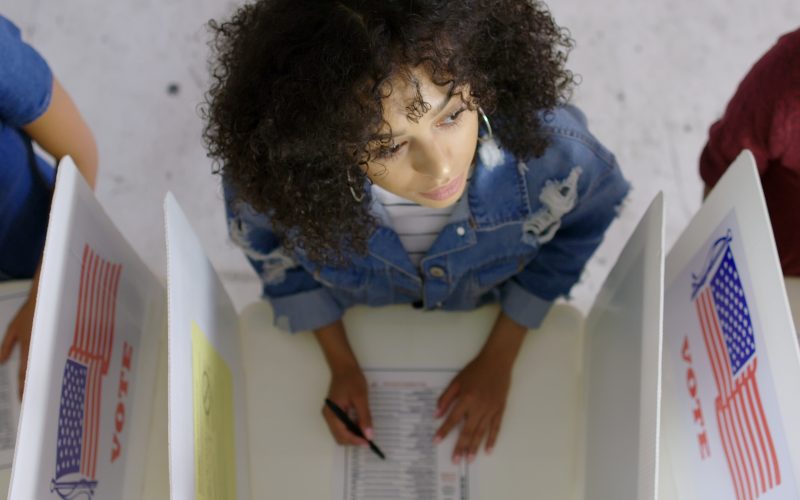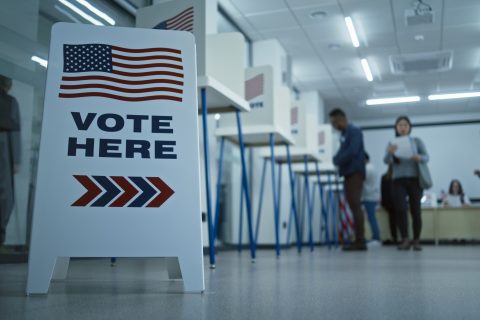The election is set: President Joe Biden vs. Donald Trump Part II. Now eyes are on if two senior citizens can get young voters to even turn out. Sara Suzuki is a senior researcher at CIRCLE, a non-partisan, independent research organization focused on youth civic engagement in the United States at Tufts University. She joins host Krys Boyd to discuss the issues that are most important to young voters and how candidates can best reach them.
While voter turnout rises among Gen Z, there are still barriers they face
By Shaunessy Renker, Think intern
It’s no surprise that partly because they are one of the largest generations of the American population, Baby Boomers had the highest voter turnout for quite a long time. According to CIRCLE, the Center for Information and Research on Civic Learning and Engagement, 69-percent of boomers — aged 44 to 62 at the time — voted during the 2008 Obama-McCain election.
But as of the 2022 election year, Gen Z voters are proving themselves to be serious contenders to the older generations. According to the Census Current Population Survey (CPS) Voting and Registration Supplement, 28.4-percent of youth ages 18-24 cast a ballot in 2022. Compare that to the 23-percent of Millennials who voted in 2006, 23.5-percent of Gen Xers who voted in 1990, and the 27.9-percent of Baby Boomers who voted in 1974.
“In recent presidential elections, we’ve had historic highs in terms of turnout by 18 to 29 year-olds,” says Sara Suzuki, senior researcher at CIRCLE. “This generation [Gen Z] has been voting at a higher rate than other generations when they were the same age.”
However, Suzuki says that we can’t ignore the fact that young people vote at generally lower rates compared to middle-aged and senior voters. She says this is because they face many barriers that other generations don’t. There are election policies that create obstacles for young people who are first-time voters and unfamiliar with navigating the logistics of voter registration. In addition, they often don’t live at a permanent address due to factors such as college, internships, new jobs, etc., making the decision for which state to vote more difficult.
“Young people are also more diverse, especially in terms of race,” says Suzuki. “And so any sort of election policy that is racially targeted can really disproportionately impact our young voters.”
Older generations have a steadier schedule and rhythm to their lives, meaning that finding the time to vote isn’t usually a problem for them. The same cannot be said for young people who have a more sporadic schedule with classes, part-time jobs, and extracurriculars.
“We often see a racial gab in turnout rates [among] youth of color,” says Sara Suzuki. “In one area where we see this stark contrast is in young people’s interest in running for office. Youth of color are disproportionately more interested in running for office than their white peers, but are much less represented in elected offices throughout the country.”
Suzuki says that this pattern of more interest and less representation leads CIRCLE to infer that this disparity may exist in other types of civic engagement as well, especially voting.
“What we do find is that young people who have less access to resources – those in lower income households, those in rural communities – really lack the civic support, or civic infrastructure, that is necessary to participate,” she says.





